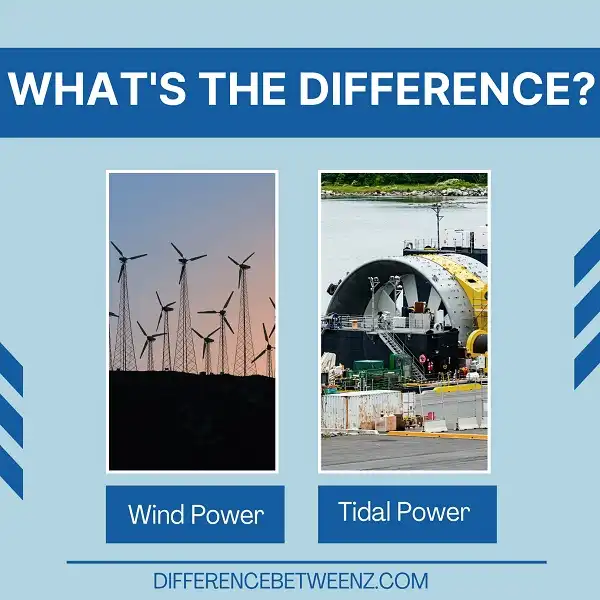If you’re thinking about investing in renewable energy, you might be wondering if wind power or tidal power is a better option. Both have their pros and cons, but here’s a summary of the key differences between wind and tidal power:
Wind turbines convert kinetic energy from the wind into electrical energy. However, wind speed can vary depending on location and time of day.
Tidal turbines harness the potential energy in tides to generate electricity. Tides are more predictable than wind speeds, but specific locations are necessary to take advantage of this type of power generation.
What is Wind Power?
Wind power is a renewable energy source that has been used for centuries. Windmills were used to grind grain and pump water, and wind-powered boats were used to transport goods and passengers.
- Today, wind turbines are used to generate electricity. Wind turbines work by converting the kinetic energy of the wind into electrical energy. The blades of the turbine are mounted on a shaft that is connected to a generator.
- As the blades rotate, they turn the shaft, which in turn rotates the generator. This produces an electric current that can be used to power homes and businesses.
- Wind turbines can be used singly or in groups, and they can be small enough to fit on a rooftop or large enough to power a whole community. Wind power is clean, sustainable, and environmentally friendly, making it an increasingly popular choice for those looking to reduce their reliance on fossil fuels.
What is Tidal Power?
- Tidal power is a form of hydropower that converts the energy of tides into electricity or other forms of power. Tidal power is not currently used extensively, but has great potential for the future.
- Tidal companies are working on developing turbines that can be placed in rivers and estuaries to generate power from the movement of water. Tidal power has many advantages over other forms of renewable energy.
- It is emissions-free, predictable, and reliable. Tidal power also has a very small footprint and can be easily integrated into existing infrastructure. With continued research and development, tidal power could become a major source of renewable energy in the coming years.
Difference between Wind Power and Tidal Power
- Wind power and tidal power are two forms of renewable energy that have been used for centuries. Wind power is created by the force of the wind on turbine blades, which spins a generator to create electricity.
- Tidal power is created by the gravitational pull of the moon on the ocean, which causes tides. Tidal power can be harnessed using barrages, dams, or turbines.
- Both wind power and tidal power are considered renewable because they are powered by natural forces that will never run out. Wind power is more expensive to produce than tidal power, but it is more efficient and can be used to generate electricity around the clock. Tidal power is less expensive to produce, but it is only available during certain times of the day and night.
Conclusion
So, what’s the verdict? Is wind power better than tidal power or vice versa? The answer is, it depends. Both types of energy have their pros and cons, so it ultimately comes down to what matters most to you as a consumer or business owner. If you’re looking for an environmentally friendly source of energy that doesn’t require much maintenance, then wind power might be a good choice for you. But if you live in an area with a high concentration of tidal activity, tidal power could be the more viable option.


